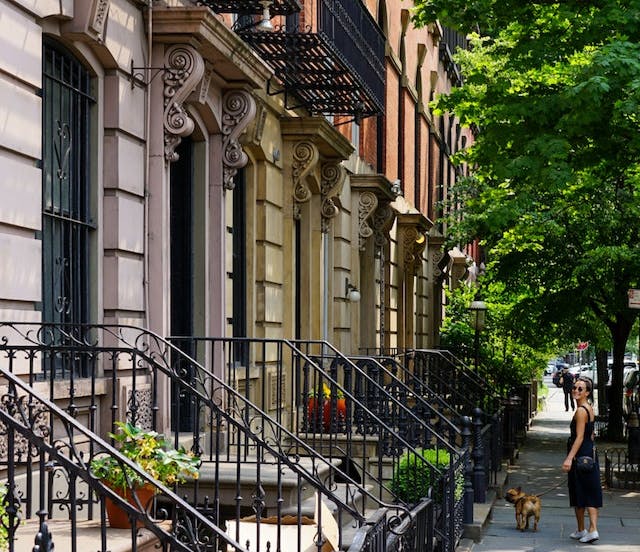Could the Supreme Court’s Next Heavy Lift Be New York City Rent Control?
In a new case, a coalition of apartment owners is asking for relief from restrictions first imposed against landlords on an emergency basis in World War II.

The Supreme Court, having gored two of the left’s most sacred cows, abortion and affirmative action, is being asked to decide the fate of rent control. New York City’s scheme to regulate apartment prices, billed as a World War II-era emergency measure, is a government taking that’s distorted the local housing market ever since. The Nine dodged the question a decade ago. It now has an opportunity to reaffirm constitutional property rights.
A coalition of apartment owners is, after failing in lower tribunals, taking their case to the high court by pointing to the plain language of the Fifth Amendment. Its Takings Clause bars the government from seizing “private property” for “public use, without just compensation.” Yet the owners of about half of New York City’s apartments are limited by law as to how they can use their property, and the rents they can levy, with no recompense.
These “appropriations of an owner’s fundamental property rights,” the owners contend, are “physical takings” and are invalid. The high court agreed on that head in 2021 in Cedar Point Nursery v. Hassid, a case that involved agricultural property. Now the apartment owners ask the Nine to apply the same logic to residential properties. As New York flails in a self-imposed housing crisis, the court’s scrutiny on rent control is overdue.
The property owners note that while ensuring a supply of affordable housing is an admirable goal, it’s unfair to achieve it by placing the “burden” on “a select minority of property owners.” Worse, as basic economics suggest, limiting the price of any commodity is bound to have disruptive effects on the market for it. By capping rents in half of New York’s apartments below the market rate, prices in the remaining units end up artificially higher.
Plus, also, too, when the government requires rents to be set below the point where landlords can break even on their expenses — much less make a profit — what incentive do the owners have to maintain their buildings? That’s one reason why Milton Friedman used to quote the Swedish economist Assar Lindbeck, who called rent control “the most efficient technique presently known to destroy a city — except for bombing.”
That point was echoed by the architectural historian Nathan Silver, best known for his book “Lost New York,” in which he called the city’s rent control law an “insidious force for destruction.” That’s because one of its unintended consequences was to encourage the demolition of old buildings subject to rent control so they can be replaced by “new cheap construction.” As he put it in 1967, “bad buildings are driving out good.”
By 1980, New York was teetering on the verge of bankruptcy in part because landlords had “often abandoned their buildings, removing them from the tax rolls,” as journalist Ken Auletta noted, since they “were not getting a return on their investment.” The lower quality housing stock was prompting many “middle income residents” to flee the city, Mr. Auletta said at the time. It also crimped the livelihood of many small landlords.
Yet rent control was too entrenched to get rid of. Even Mayor Koch vowed to keep his rent-controlled apartment while living in Gracie Mansion, Mr. Auletta notes. The system offers a perk for many upper-income, long-term New Yorkers, as housing analyst Howard Husock reckons, with “22 percent of rent-stabilized tenants” earning more than $100,000 a year. Nearly a third of such tenants “first occupied their apartments more than 20 years ago.”
When rent control was imposed against landlords at New York in 1943, a Sun editorial warned that the “regulation into the ordinary relationship between tenants and landlords” would have “more consequences than may appear on the surface.” Yet the interference was seen as a wartime necessity. Few could have imagined that some 80 years later such an unconstitutional regime would still be in place to restrict property owners’ rights.

